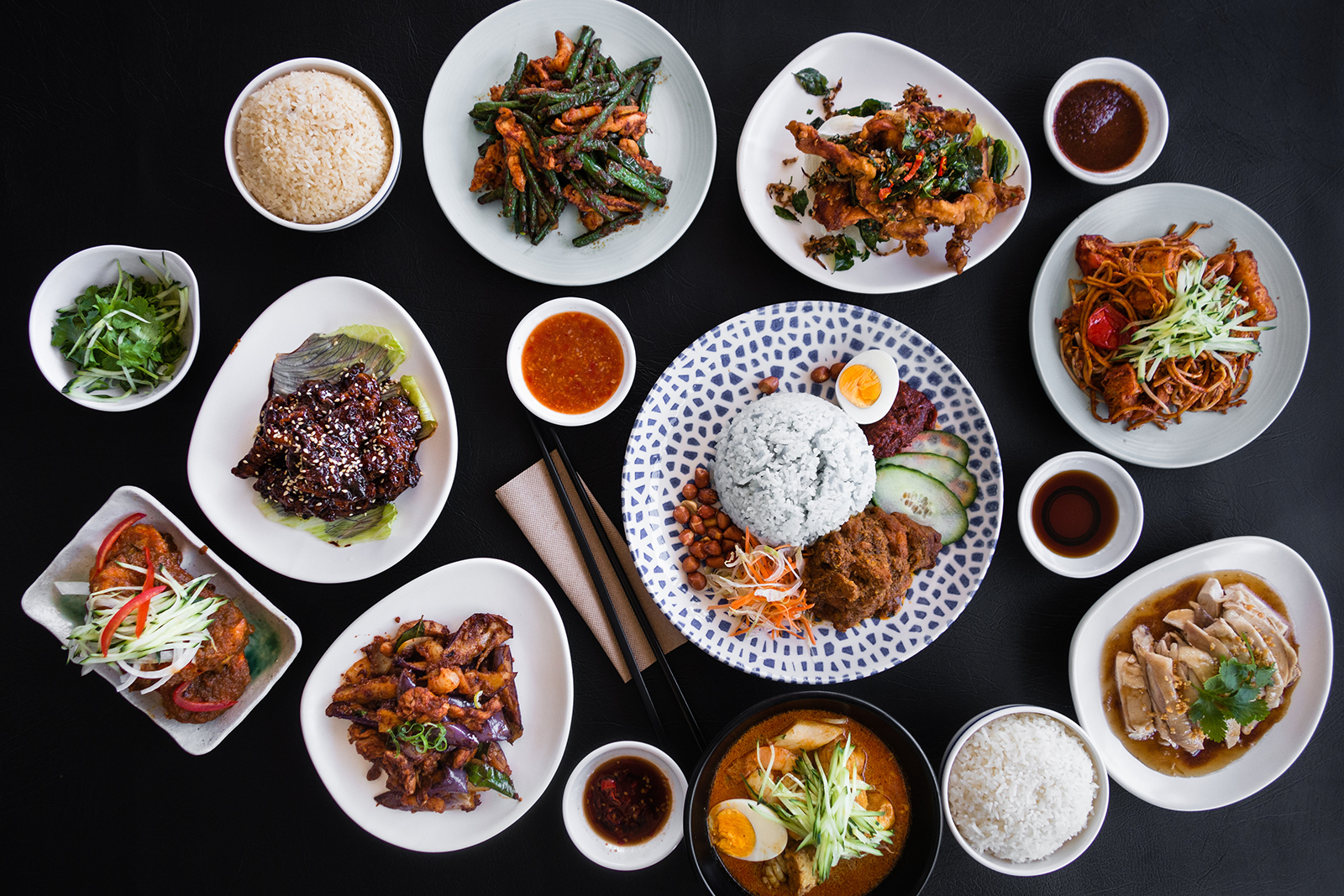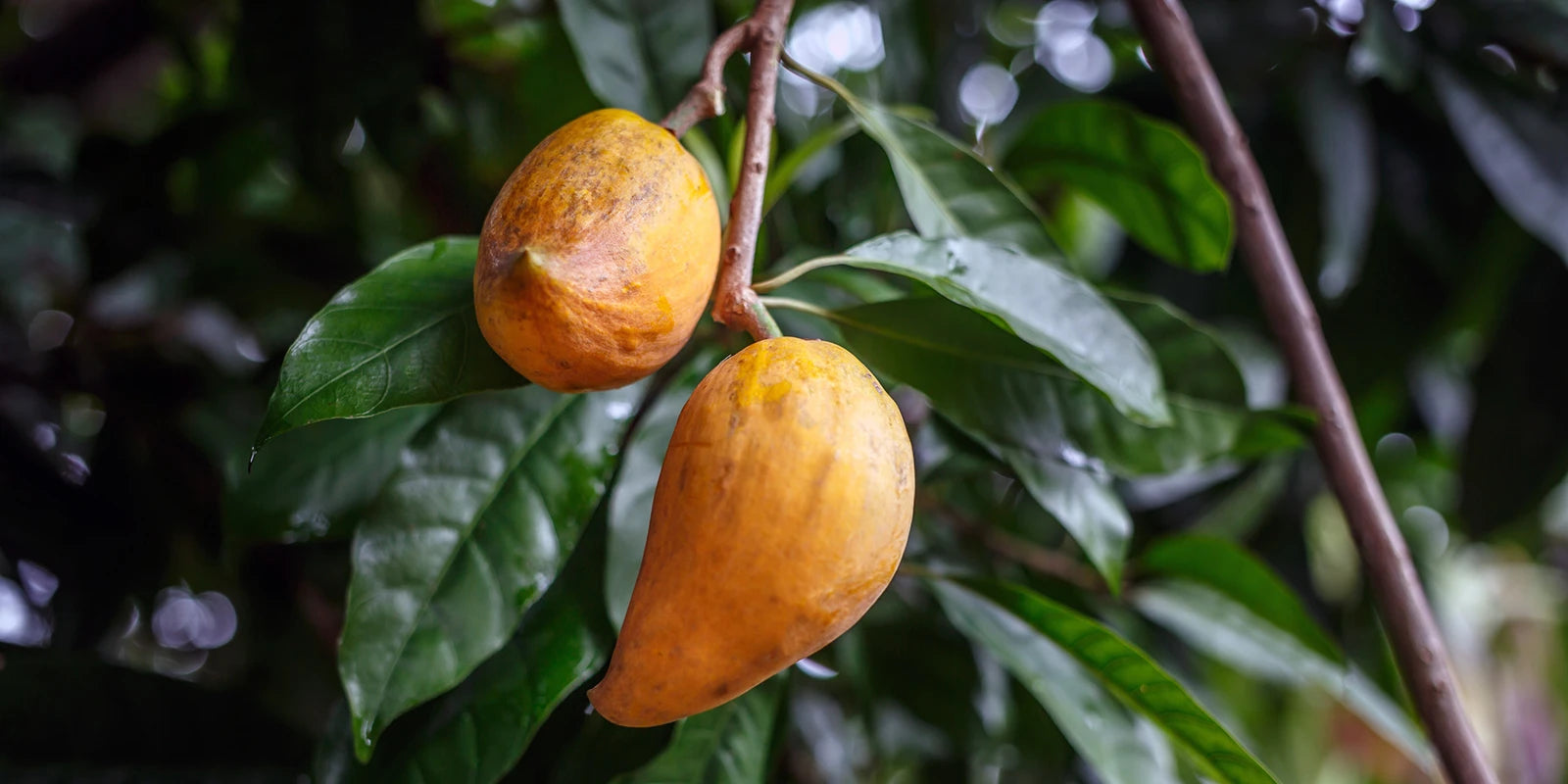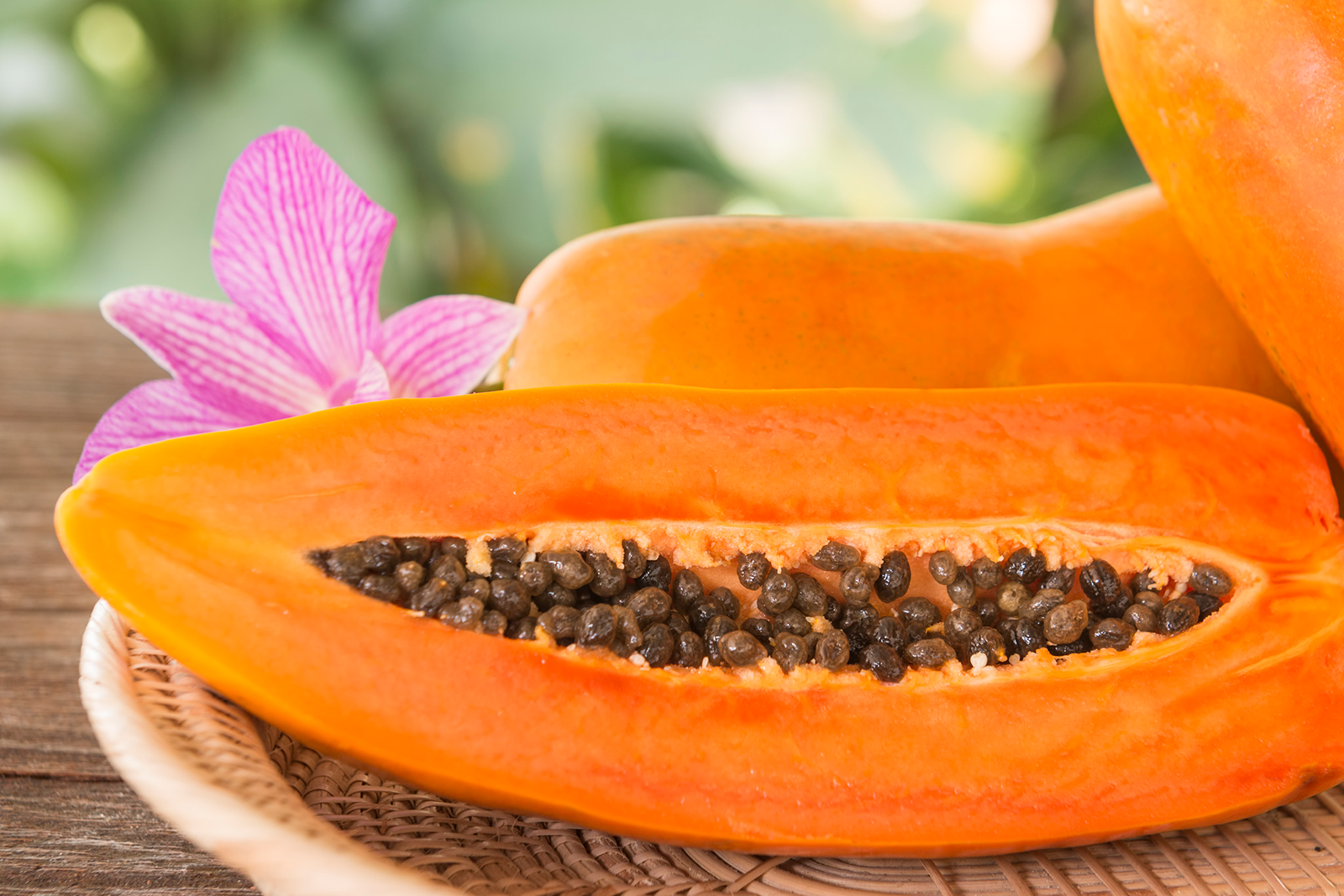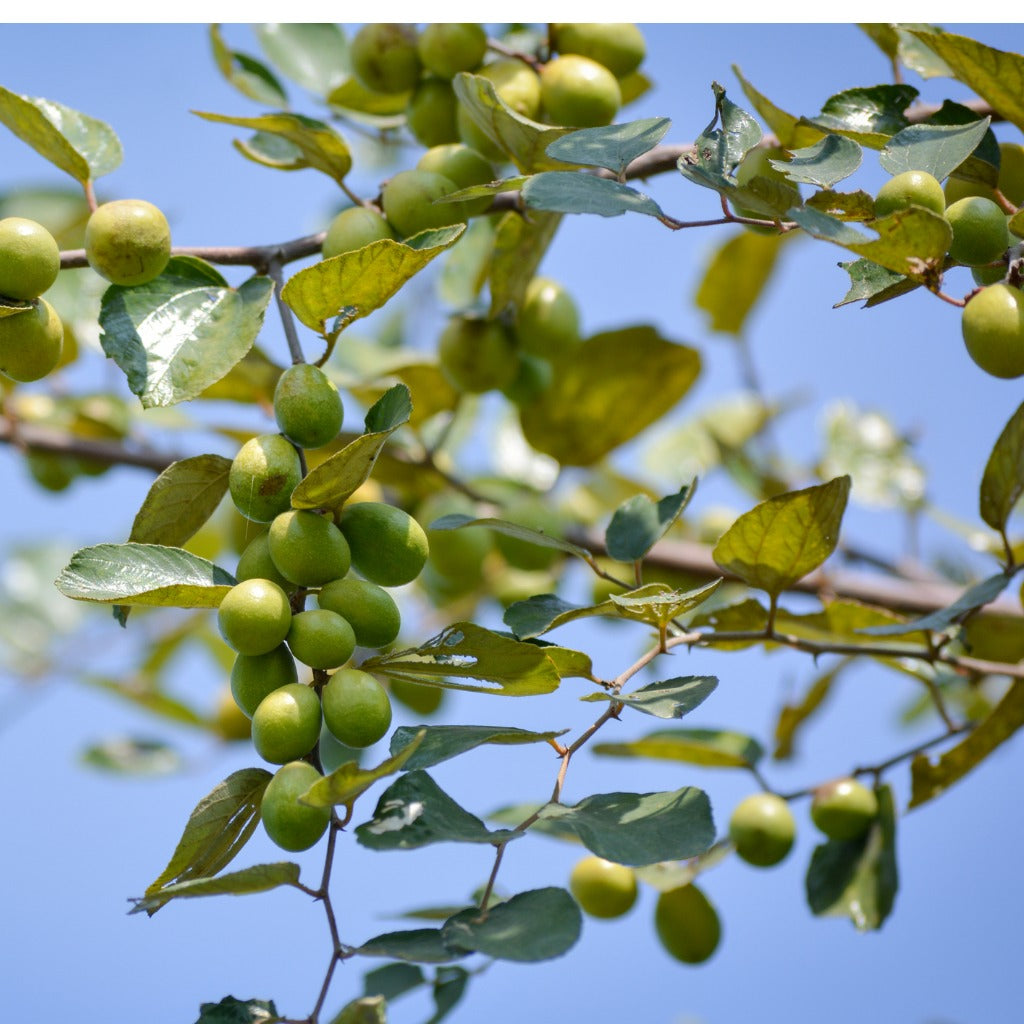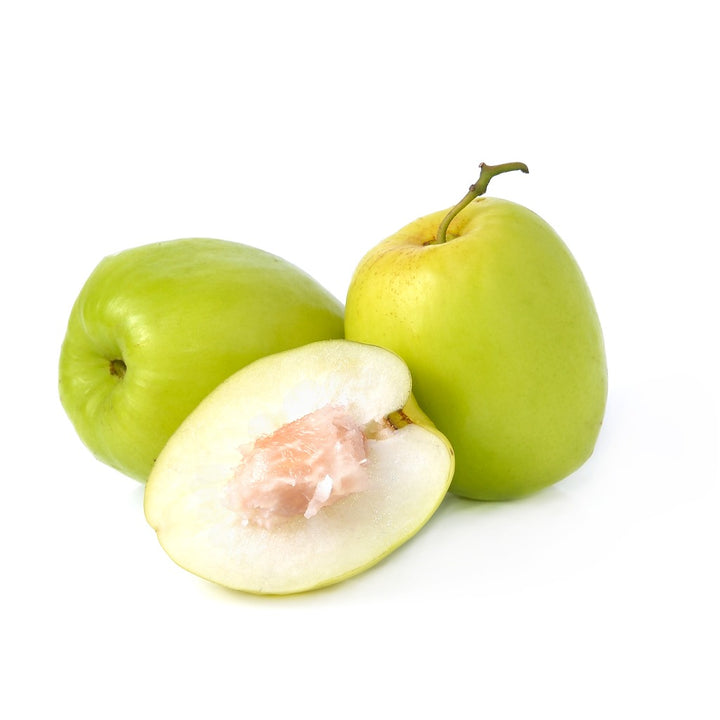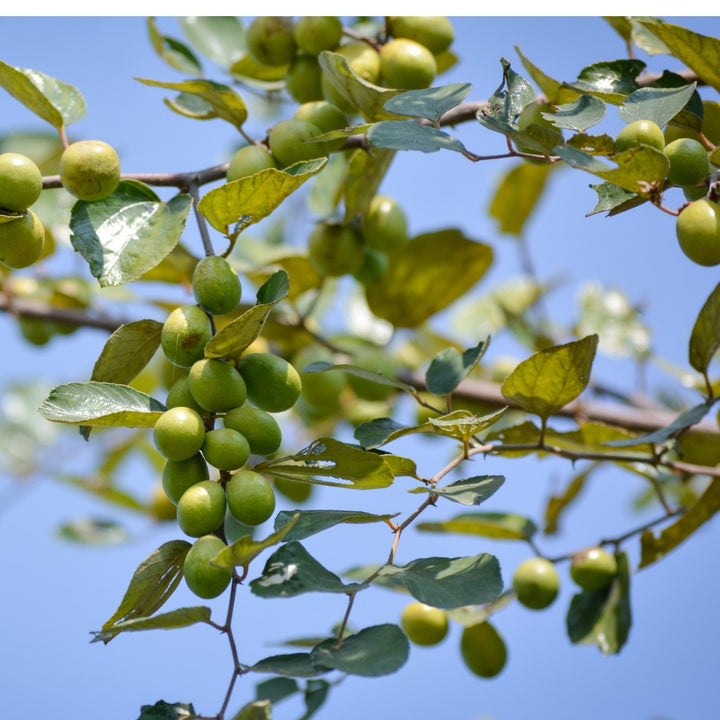Jujube Plant
Jujube (Zizipus Mauritiana)
Ziziphus mauritiana, also known as Indian jujube, Indian plum, Chinese date, Chinee apple ber, and dunks is a tropical fruit tree species belonging to the family Rhamnaceae.
Jujube is a hardy tree that copes with extreme temperatures and thrives under rather dry conditions. Fruit quality is best under hot, sunny and dry conditions, but there should be a rainy season to support extension growth and flowering, ideally leaving enough residual soil moisture to carry the fruit to maturity. It is known for its ability to withstand adverse conditions, such as salinity, drought and waterlogging.
Fruit is eaten fresh or dried and can be made into a floury meal, butter, or a cheese like paste, used as a condiment. Also used for candy making and pickling. The fruit is a good source of carotene, vitamins A and C, and fatty oils. A refreshing drink is prepared by macerating fruits in water. In Indonesia, young leaves are cooked as a vegetable.
If one has an abundance of fruit, it can be frozen for long periods without any deterioration of quality.
At maturity, fruits are generally light yellowish orange to almost brown in color. Many people say that when these are eaten fresh, they have flavor somewhat resembling that of a green apple. Older fruits which have been allowed to sit for a few days before being eaten often will have a flavor almost like a date.
In ideal conditions and the right climate Jujube will fruit after 3 years from seed. In NZ, it might take 5-6 years to fruit.
Plant Care
- Soil: Thrives in well-drained sandy or loamy soils with a pH between 6.0 and 7.5.
- Watering: Water moderately; allow the soil to dry between waterings, especially important during the fruiting season to enhance fruit sweetness.
- Temperature: Performs well in temperatures between 20°C to 35°C. It is quite drought and heat tolerant but requires hot summers for fruiting.
- Light: Full sun is essential for optimal fruit production.
- Fertilising: Apply a balanced NPK fertilizer like 10-10-10 in early spring. Supplement with potassium during the fruit development phase to improve fruit quality.
- Pruning: Prune in late winter to remove dead or overcrowded branches and to maintain tree shape.
- Mulching: Use organic mulch to conserve soil moisture, especially in areas with hot, dry summers.
- Pest Control: Monitor for pests such as aphids and mealybugs. Employ integrated pest management strategies as needed.
- Flowering and Fruiting: Produces small, fragrant white flowers in late spring, followed by edible fruit that matures in late summer to early autumn.
- Potting: Can be grown in a pot but prefers the ground. Ensure the pot is large and has good drainage if container growing is required.
- Feeding Regime: Regular feeding during the active growth period supports healthy growth and maximizes fruit production.
- Plants would be much better leaving the nursery around October this year, this will allow them to recover and send new growth after a long wet winter
We ship our plants and garden supplies throughout New Zealand. Due to the increased costs of shipping and packaging, we now apply a delivery charge. After offering free shipping for three consecutive years, we find it necessary to adjust this policy to align with current market conditions. However, we have lowered our prices to help offset this change.
Please note, we do not ship plants or garden supplies internationally from New Zealand. We do export plants and tissue culture materials from our overseas nursery, which requires a minimum order. Please contact us at hello@exoticanz.com to discuss your specific requirements.
Shipping (plants) from:
North Island Urban $25
North Island Rural $35
South Island Urban $25
South Island Rural $35
Shipping Garden Supplies:
North Island Urban $20
North Island Rural $25
South Island Urban $35
South Island Rural $45
Delivery
- Our plants are available for shipment from September to April, depending on stock levels. Typical delivery times range from 5 to 7 business days, although they can take up to 10 business days depending on the destination.
- We take extra care in packaging; most of our plants are secured in bespoke inserts and shipped in individual boxes to ensure they arrive undamaged.
- Deliveries are scheduled once a fortnight, typically on Monday. If you place your order over the weekend, we aim to dispatch your plants on the following Monday. This scheduling allows our team to prepare your order thoroughly and ensures the courier has sufficient time to deliver your plants safely, avoiding any unnecessary delays over the weekend.
- All orders are shipped via courier track and trace service (not signature required)
- We cannot deliver to PO Box addresses.
- If you have a rural address, please contact us beforehand to discuss the best delivery options and avoid any potential issues.
Additional Delivery Information
- Most plants are shipped with soil. During the cooler months, we closely monitor weather conditions and may temporarily delay shipments if the weather is particularly severe. Our packing process includes adding insulation when necessary to protect the plants against temperature extremes.
- In summer, we ensure that plants are thoroughly watered before they leave our nursery. Occasionally, we may need to ship plants bare-rooted, particularly when they cannot be comfortably re-potted into smaller packaging for shipping. We will always discuss this with you in advance if your plant needs to be shipped in this manner.
- It's important to note that shipping can be a stressful experience for plants, often due to spending several days in a dark, confined space. While most plants withstand this with little to no stress, some may experience leaf drop. However, they generally recover quickly with some additional care, including proper watering and gradual reintroduction to light after arrival.



